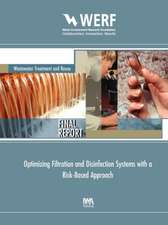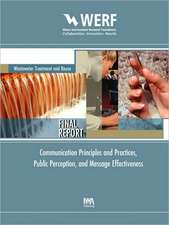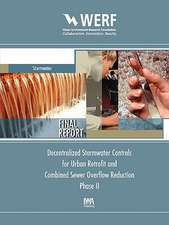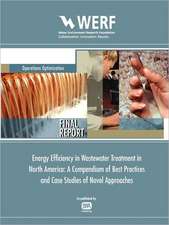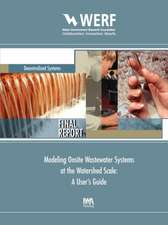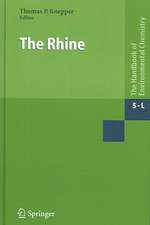Progress in Spatial Data Handling: 12th International Symposium on Spatial Data Handling
Editat de Andreas Riedl, Wolfgang Kainz, Gregory A. Elmesen Limba Engleză Paperback – 4 mai 2017
| Toate formatele și edițiile | Preț | Express |
|---|---|---|
| Paperback (1) | 1248.20 lei 6-8 săpt. | |
| Springer Berlin, Heidelberg – 4 mai 2017 | 1248.20 lei 6-8 săpt. | |
| Hardback (1) | 1254.80 lei 6-8 săpt. | |
| Springer Berlin, Heidelberg – 10 iul 2006 | 1254.80 lei 6-8 săpt. |
Preț: 1248.20 lei
Preț vechi: 1522.20 lei
-18% Nou
Puncte Express: 1872
Preț estimativ în valută:
238.90€ • 257.88$ • 200.32£
238.90€ • 257.88$ • 200.32£
Carte tipărită la comandă
Livrare economică 19 aprilie-03 mai
Preluare comenzi: 021 569.72.76
Specificații
ISBN-13: 9783662500545
ISBN-10: 366250054X
Pagini: 942
Ilustrații: XX, 942 p.
Dimensiuni: 155 x 235 x 48 mm
Greutate: 1.32 kg
Ediția:Softcover reprint of the original 1st ed. 2006
Editura: Springer Berlin, Heidelberg
Colecția Springer
Locul publicării:Berlin, Heidelberg, Germany
ISBN-10: 366250054X
Pagini: 942
Ilustrații: XX, 942 p.
Dimensiuni: 155 x 235 x 48 mm
Greutate: 1.32 kg
Ediția:Softcover reprint of the original 1st ed. 2006
Editura: Springer Berlin, Heidelberg
Colecția Springer
Locul publicării:Berlin, Heidelberg, Germany
Cuprins
Plenary of Submitted Papers.- The Devil is still in the Data: Persistent Spatial Data Handling Challenges in Grassroots GIS.- Physical vs. Web Space — Similarities and Differences.- Spatial Cognition.- Utilization of Qualitative Spatial Reasoning in Geographic Information Systems.- Identification of the Initial Entity in Granular Route Directions.- Data Models.- Modeling and Engineering Algorithms for Mobile Data.- Database Model and Algebra for Complex and Heterogeneous Spatial Entities.- QACHE: Query Caching in Location-Based Services.- A Voronoi-Based Map Algebra.- Modeling Geometric Rules in Object Based Models: An XML / GML Approach.- Data Mining.- Exploring Geographical Data with Spatio-Visual Data Mining.- Continuous Wavelet Transformations for Hyperspectral Feature Detection.- Measuring Linear Complexity with Wavelets.- Expert Knowledge and Embedded Knowledge: Or Why Long Rambling Class Descriptions are Useful.- Data Retrieval.- Preference Based Retrieval of Information Elements.- Spatiotemporal Event Detection and Analysis over Multiple Granularities.- Reduced Data Model for Storing and Retrieving Geographic Data.- Filling the Gaps in Keyword-Based Query Expansion for Geodata Retrieval.- Data Quality.- Using Metadata to Link Uncertainty and Data Quality Assessments.- An Evaluation Method for Determining Map-Quality.- Efficient Evaluation Techniques for Topological Predicates on Complex Regions.- Implementation of a Prototype Toolbox for Communicating Spatial Data Quality and Uncertainty Using a Wildfire Risk Example.- Integration and Fusion.- Changes in Topological Relations when Splitting and Merging Regions.- Integrating 2D Topographic Vector Data with a Digital Terrain Model — a Consistent and Semantically Correct Approach.- A Hierarchical Approach tothe Line-Line Topological Relations.- Coastline Matching Process Based on the Discrete Fréchet Distance.- Semantics and Ontologies.- Characterizing Land Cover Structure with Semantic Variograms.- Semantic Similarity Measures within the Semantic Framework of the Universal Ontology of Geographical Space.- A Quantitative Similarity Measure for Maps.- A Semantic-based Approach to the Representation of Network-Constrained Trajectory Data.- Towards an Ontologically-driven GIS to Characterize Spatial Data Uncertainty.- 2D-Visualization.- Structuring Kinetic Maps.- Advanced Operations for Maps in Spatial Databases.- A Tangible Augmented Reality Interface to Tiled Street Maps and its Usability Testing.- A Linear Programming Approach to Rectangular Cartograms.- 3D-Visualization.- Automated Construction of Urban Terrain Models.- A Flexible, Extensible Object Oriented Real-time Near Photorealistic Visualization System: The System Framework Design.- A Tetrahedronized Irregular Network Based DBMS Approach for 3D Topographic Data Modeling.- 3D Analysis with High-Level Primitives: A Crystallographic Approach.- Generalization.- The Hierarchical Watershed Partitioning and Data Simplification of River Network.- Grid Typification.- Skeleton Based Contour Line Generalization.- Conflict Identification and Representation for Roads Based on a Skeleton.- The’ stroke’ Concept in Geographic Network Generalization and Analysis.- Uncertainty.- An Integrated Cloud Model for Measurement Errors and Fuzziness.- The Influence of Uncertainty Visualization on Decision Making: An Empirical Evaluation.- Modeling Uncertainty in Knowledge Discovery for Classifying Geographic Entities with Fuzzy Boundaries.- Capturing and Representing Conceptualization Uncertainty Interactively using Object-Fields.-Elevation Modeling.- From Point Cloud to Grid DEM: A Scalable Approach.- Use of Plan Curvature Variations for the Identification of Ridges and Channels on DEM.- An Evaluation of Spatial Interpolation Accuracy of Elevation Data.- Working with Elevation.- I/O-Efficient Hierarchical Watershed Decomposition of Grid Terrain Models.- Tradeoffs when Multiple Observer Siting on Large Terrain Cells.- Scale-Dependent Definitions of Gradient and Aspect and their Computation.- Spatial Modeling.- Development Density-Based Optimization Modeling of Sustainable Land Use Patterns.- Building an Integrated Cadastral Fabric for Higher Resolution Socioeconomic Spatial Data Analysis.- Analysis of Cross Country Trafficability.
Notă biografică
Andreas Riedl holds a graduate degree and a PhD in geography and cartography from the University of Vienna. He has been active in the field of cartography and GIS in Austria, Canada, Germany and the Netherlands. His research interests are in multimedia and geocommunication, applied GIS, animation, virtual reality and hyperglobes. Currently he is an assistant professor at the University of Vienna.
Wolfgang Kainz holds a graduate degree and a PhD in technical mathematics from the Graz University of Technology, Austria. Since 1981 he has been active in the field of GIS and spatial data handling in various functions at universities and research institutions in Austria, Brazil, Kuwait, Qatar, the USA, and the Netherlands. His research interest is in spatial databases, fuzzy logic and geodata policies. He is Professor of Cartography and Geoinformation at the University of Vienna.
Gregory Elmes holds a graduate degree in Geographic Information Systems from Edinburgh University and a PhD in Geography from the Pennsylvania State University. He is Professor of Geography at West Virginia University and has been active in GIS at universities in Sweden and Italy. His current research interests include the incorporation of spatio-temporal information in health and forensic science, and the implications of geographic information technologies in society at local and global scales.
Wolfgang Kainz holds a graduate degree and a PhD in technical mathematics from the Graz University of Technology, Austria. Since 1981 he has been active in the field of GIS and spatial data handling in various functions at universities and research institutions in Austria, Brazil, Kuwait, Qatar, the USA, and the Netherlands. His research interest is in spatial databases, fuzzy logic and geodata policies. He is Professor of Cartography and Geoinformation at the University of Vienna.
Gregory Elmes holds a graduate degree in Geographic Information Systems from Edinburgh University and a PhD in Geography from the Pennsylvania State University. He is Professor of Geography at West Virginia University and has been active in GIS at universities in Sweden and Italy. His current research interests include the incorporation of spatio-temporal information in health and forensic science, and the implications of geographic information technologies in society at local and global scales.
Textul de pe ultima copertă
The series of International Symposia on Spatial Data Handling started in Zurich, Switzerland, in 1984. Since then it has evolved into a biennial event of high calibre, at which recent trends and developments in geographic information science are discussed. The proceedings of this series have become an important reference for researchers and students in the field of geography, cartography, and geoinformation.
Caracteristici
State-of-the-art trends and developments in geographic information science are presented

